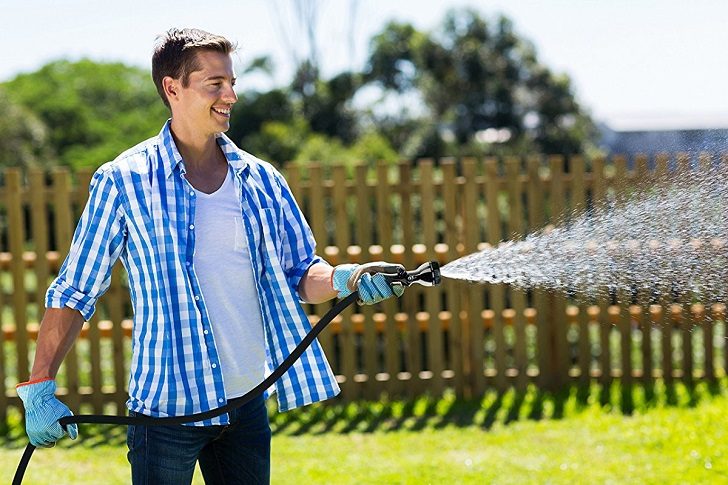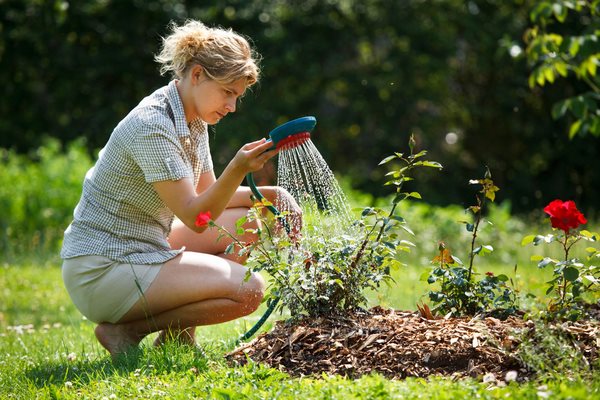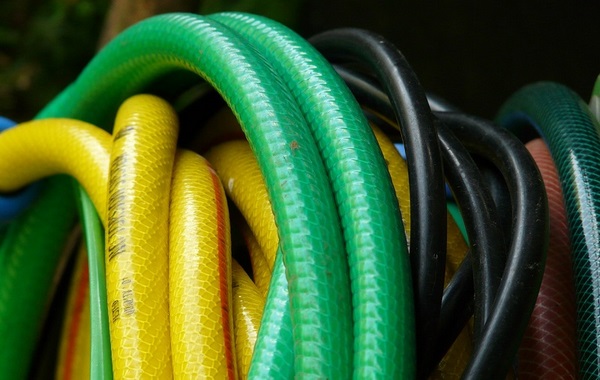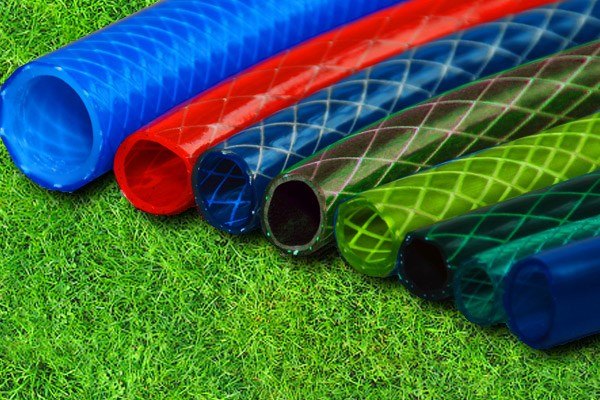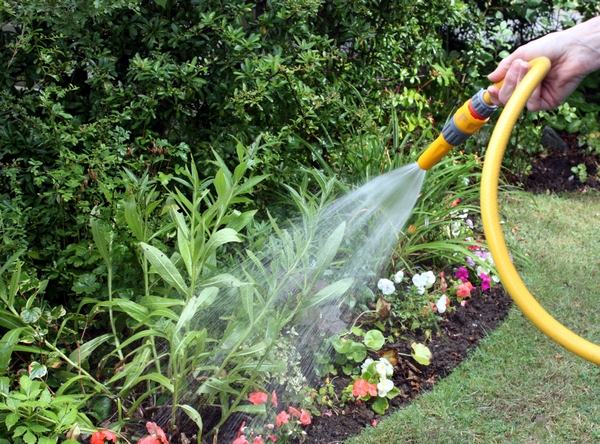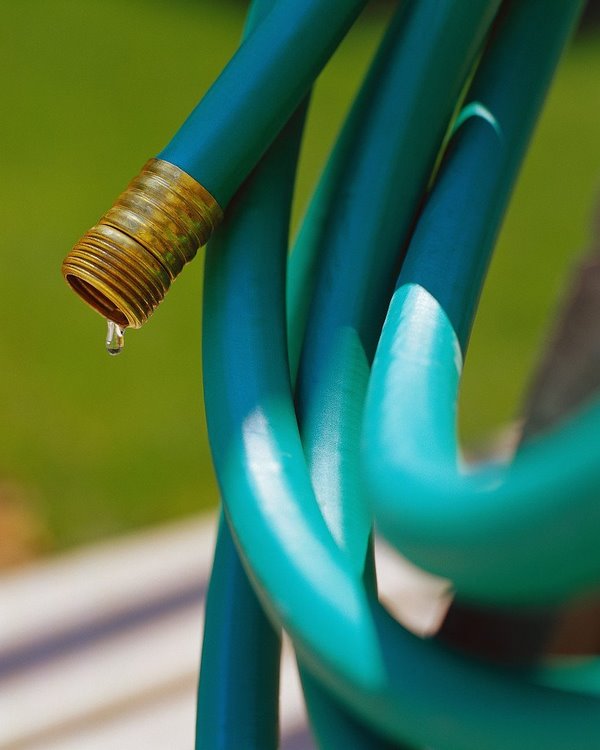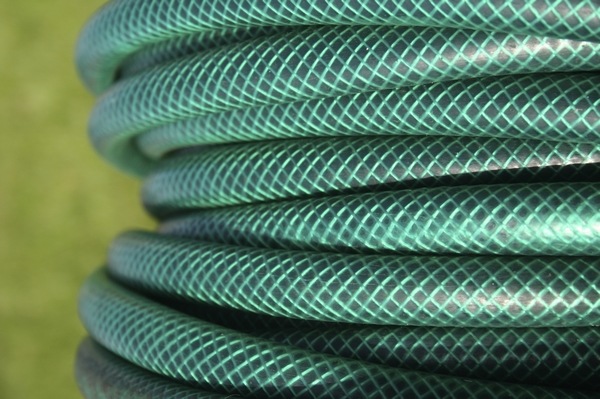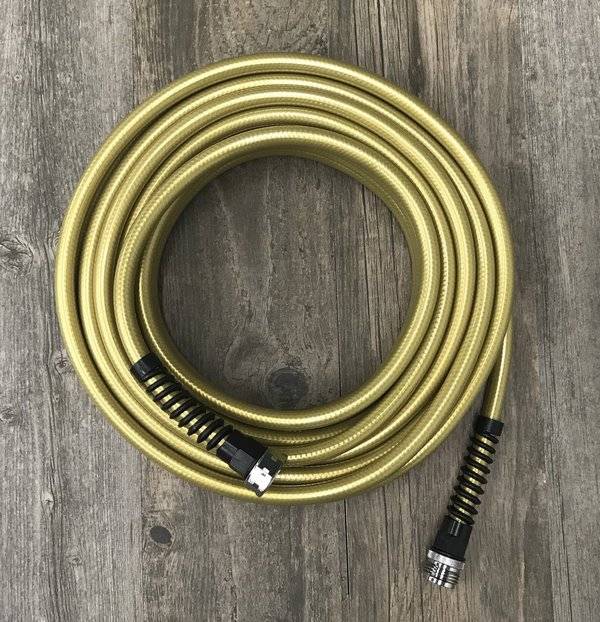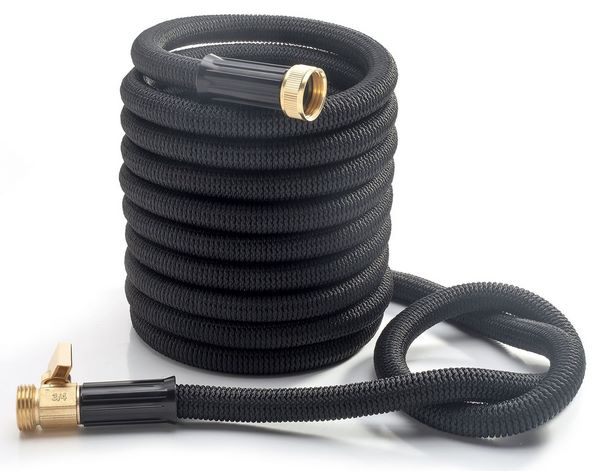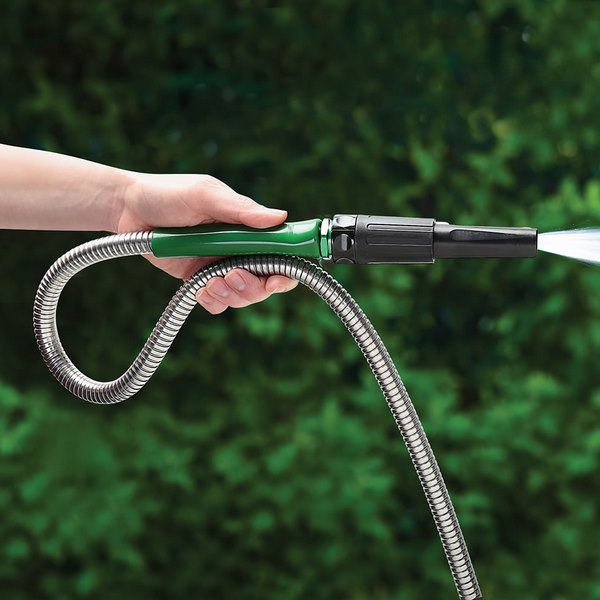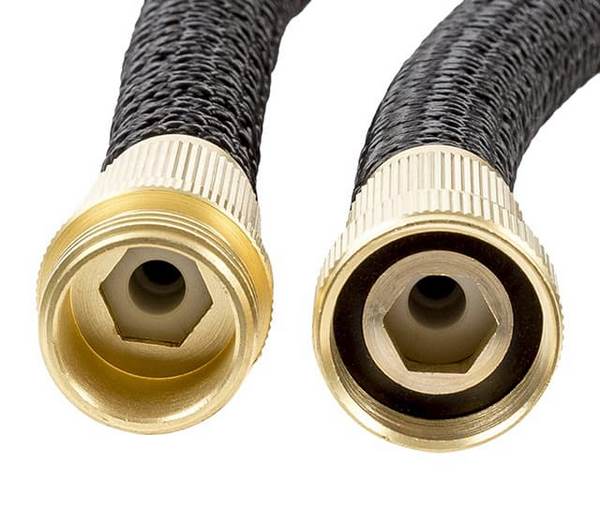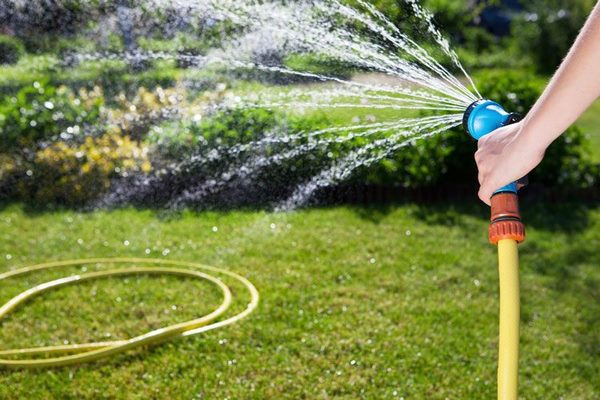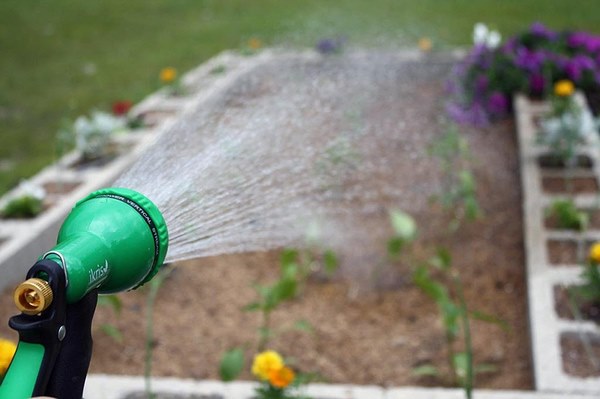How to choose the best garden hose? What do you need to know when going to a garden store and see all the different varieties? What are the important characteristics and what are the criteria that a hose needs to meet? We shall give you a review on the most popular materials, their advantages and disadvantages, and will focus your attention on the important considerations so that you can make the best choice.
Regular and timely watering of the lawn and flowers is one of the most important tasks for everyone who wants to have an immaculate front yard and backyard. Using a garden watering hose can make this task easy and you will be sure that your green grass and blooming flowers will receive the necessary amount of water as soon as they need it. A good quality hose for irrigation will not only facilitate the care of the garden, but will last much longer than its cheap counterpart.
How to choose the best garden hose – choosing length, diameter and material
When you want to choose the best garden hose, you need to know that they can differ in length, diameter, material, weight, ecological compatibility, pressure, reinforced or not, protection against UV rays, temperature resistance, etc.
Length – The important factor in choosing the length is the size of the garden. Ideally, the hose should reach out to any corner of your garden. In cases the hose is not long enough you may extend it with the help of a connector and get the the required length. Just keep in mind that the longer the hose, the heavier, so it may become difficult to move it around.
How to choose the diameter of the garden watering hose? This is another very important parameter as it determines the stream of water. You have to know whether you need a small or larger water stream. The most common garden diameters (based on the inside diameter of the hose) are:
- ½ “- 13 mm;
- 5/8 “- 16 mm;
- ¾ “- 19 mm;
- 1 inch to 25.4 mm;
- 1 ¼ “- 32 mm;
- 1 ½ “- 38 mm.
- Obviously, the bigger the diameter, the more water but you need to keep in mind that the longer the hose, the thinner it should be.
How to choose the material of the garden watering hose?
Hoses are made from different materials – vinyl, polyurethane, rubber and stainless steel – and this is the main factor that affects the lifespan of your garden hose. Let’s have a look at the pros and cons of different materials.
Rubber hoses are durable, they perfectly tolerate temperature changes, they are resistant to mechanical deformation and twisting. In addition, when reinforced, it is almost impossible to puncture it, and they are not afraid of frost and ultraviolet rays. Rubber hoses are solid and strong and have a longer service life than vinyl hoses. On the downside one of their biggest cons is the weight. They can be really heavy to move around the garden. You need to check the labels as sometimes rubber composition may contain toxic substances and heavy metals.
Vinyl hoses are usually reinforced with a radial cord as they are the least durable option and they are not resistant to temperature changes, they crack easily or become brittle. Another disadvantage is that they are not as flexible as rubber hoses and are susceptible to kinking and can degrade if left outside in harsh weather conditions. Vinyl hoses are not resistant to mechanical deformation so you need to keep that in mind as well. The advantage of vinyl hoses is that they are the least expensive and most lightweight option and when the budget is a consideration, a vinyl garden hose is the perfect choice for any light gardening tasks.
Polyurethane garden watering hoses are lightweight, they weighs less than rubber and you can move them around the garden without much effort. They are easily stretched and coiled but polyurethane is not as durable as rubber, for example, and will eventually crack. Polyurethane hoses can kink or become tangled.
Polymer hoses are one of the most popular options on the market if you are looking for a good garden hose. They withstand high and low temperatures and are very flexible and easy to coil. The lightweight allows easy movement and another advantage is that these hoses are not susceptible to damage from direct sunlight. On the minus side of polymer hoses is the fact that the material has a curvature memory and if not spread and filled with water, the hose will kink.
Expandable/collapsible garden hoses from Denier woven fabric – this is one of the most durable options on the market and these hoses can shrink to approximately a third of their expanded length when emptied of water which makes them very easy to store. In addition, these hoses are lightweight and very easy to use and when filled, these hoses are kink-free. However, they cannot bear freeze and direct sunlight. UV rays can break down the fibers of the materials and with time the cloth covering will fray.
Silicone garden hoses appeared on the markets not long ago and many gardeners have some considerations about the material. Cheap models made of silicone do not have reinforcing mesh, so they are lighter than the counterparts with more complex structure and have an affordable price. One of the advantages that is worth mentioning is that this hose is very flexible, it stretches well and is easily connected to sprinkler. However, do not use a silicone hose for high pressure water stream. In most cases, it will stretch and burst. In such cases reinforced silicone hose is required as it is more practical and durable. A significant disadvantage is the high price of the product. Transparent silicone hoses are most often used in the food industry but if you are looking for a safe non-toxic option, you may consider this one for light duty garden tasks.
Stainless steel garden hoses are made to be indestructible. They will not kink or leak, they are weather and UV resistant and you can be sure that your dog will not be able to chew your hose. You cannot puncture or tear them. The hoses are flexible and lightweight. The major disadvantage of metal garden hoses is that they are manufactured with a small diameter and as a result, you may struggle from the low water pressure.
How to choose the best garden hose – buyer’s tips and hints
Besides length, size, diameter and material, there are some other factors that you need to consider when buying a garden hose.
Ecological compatibility – check the label of the product. Some manufacturers specifically indicate that the hose can only be used for irrigation or for technical purposes. For example, vinyl and rubber hoses are not always safe to drink water from as they can leach chemicals into the water. If you or your pets are going to be drinking from the hose be sure to buy a drinking water safe hose. You may have to pay a little extra but safety always comes first.
Reinforcement – this is what protects the hose from kinks and splitting. Usually s special mesh lining is installed between the layers of vinyl and/or rubber for greater strength and shape maintenance.
Protection against ultraviolet rays – look for UV – protection inscription on the label. With this inscription, you can safely leave the hose under the sun, nothing will happen to it.
Hose weight – the weight of the garden hose will depend on its length, diameter and material. You need to think how you will carry the hose from the store and move it through the garden.
Operating temperatures – Most of the working temperatures of garden watering hoses vary from -20°C to + 60°C. This range covers the period from spring to late autumn. Vinyl and rubber hoses are not resistant to subzero temperatures so you need to store them for the winter period.
Color – despite the fact that most often this is the last consideration on the list, you may not realize, but the color of the hose is also worth paying attention to. Bright colors are easier to notice in the grass, which means that it is more difficult to damage the hose during lawn mowing, for example.
Hose fittings – Garden hose fittings are the end of the hose and are used to connect it to sprinklers, spigots and nozzles. Make sure that the garden hose fittings are not plastic as they will degrade very quickly especially if left out in the sun. Look for metal fittings – brass or aluminum. Brass fittings are the most durable and leak resistant. Stainless steel fittings are crush resistant and long lasting but they are not that common.

